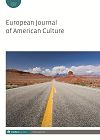
Full text loading...

This article examines Kenneth Lonergan’s film Margaret (2011), which can be viewed, I suggest, as an essential post-9/11 text. As I argue, the events of 9/11 serve within the film as the backdrop against which broader (geo)political questions of grievability are negotiated, as we see through the sprawling and pseudo-allegorical melodrama of the narrative, following a young woman who accidentally causes the death of a pedestrian by distracting a bus driver. In the first section of this article, I read the film’s geopolitical engagements alongside Judith Butler’s writing on grievability as well as Akira Mizuta Lippit’s writing on allegory. I suggest that the film’s uneasy allegorical imbrications gesture to a nexus of ethical and political questions regarding allegory and its rhetorical uses. In the second section, I examine the ways in which the film’s form and aesthetics bespeak a Derridean engagement with mourning and spectrality, ultimately gesturing to the United States’ grappling with the atrocities of the War on Terror and the attendant ontological instabilities arising in the haunted urban spaces of a post-9/11 New York City.

Article metrics loading...

Full text loading...
References


Data & Media loading...

Publication Date:
https://doi.org/10.1386/ejac_00096_1 Published content will be available immediately after check-out or when it is released in case of a pre-order. Please make sure to be logged in to see all available purchase options.